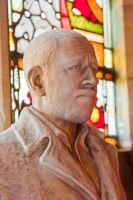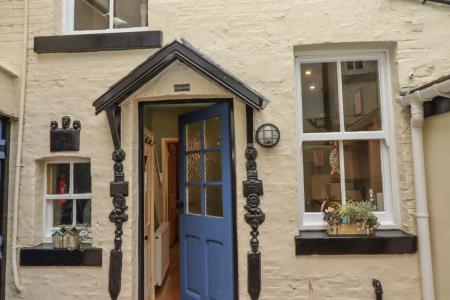
That medieval chapel stood on the site of a Bronze Age burial mound, another example of early Christian churches being sited on existing sacred locations.
A bust of Sir Tatton Sykes stands on the ledge of the westernmost window of the nave.
The stained glass is beautiful Victorian work by Clayton and Bell of London, one of the most prominent stained glass makers in Victorian England. The northern windows depict six miracles from the Gospel of St John, while the southern nave windows show parables from the Gospel of St Matthew.
The large east window shows scenes from the Passion of Christ, the Resurrection, and the Ascension. Opposite at the west end of the nave is a window depicting examples of Christian conduct, based on Matthew CHapter 25, verses 34-36.
There is a lovely brass and iron screen between the nave and chancel, and the pulpit is a fine Victorian example, carved from Caen stone. The most eye-catching feature to my eyes is the beautifully carved marble and alabaster reredos behind the high altar.
Nearby is a triple sedilia set into the south wall. Look up and you will see that the chancel ceiling is made with carved rafter beams decorated with patterns of stars.
Verdict
A beautifully proportioned little Victorian church in a wonderful country setting.








 We've 'tagged' this attraction information to help you find related historic attractions and learn more about major time periods mentioned.
We've 'tagged' this attraction information to help you find related historic attractions and learn more about major time periods mentioned.





